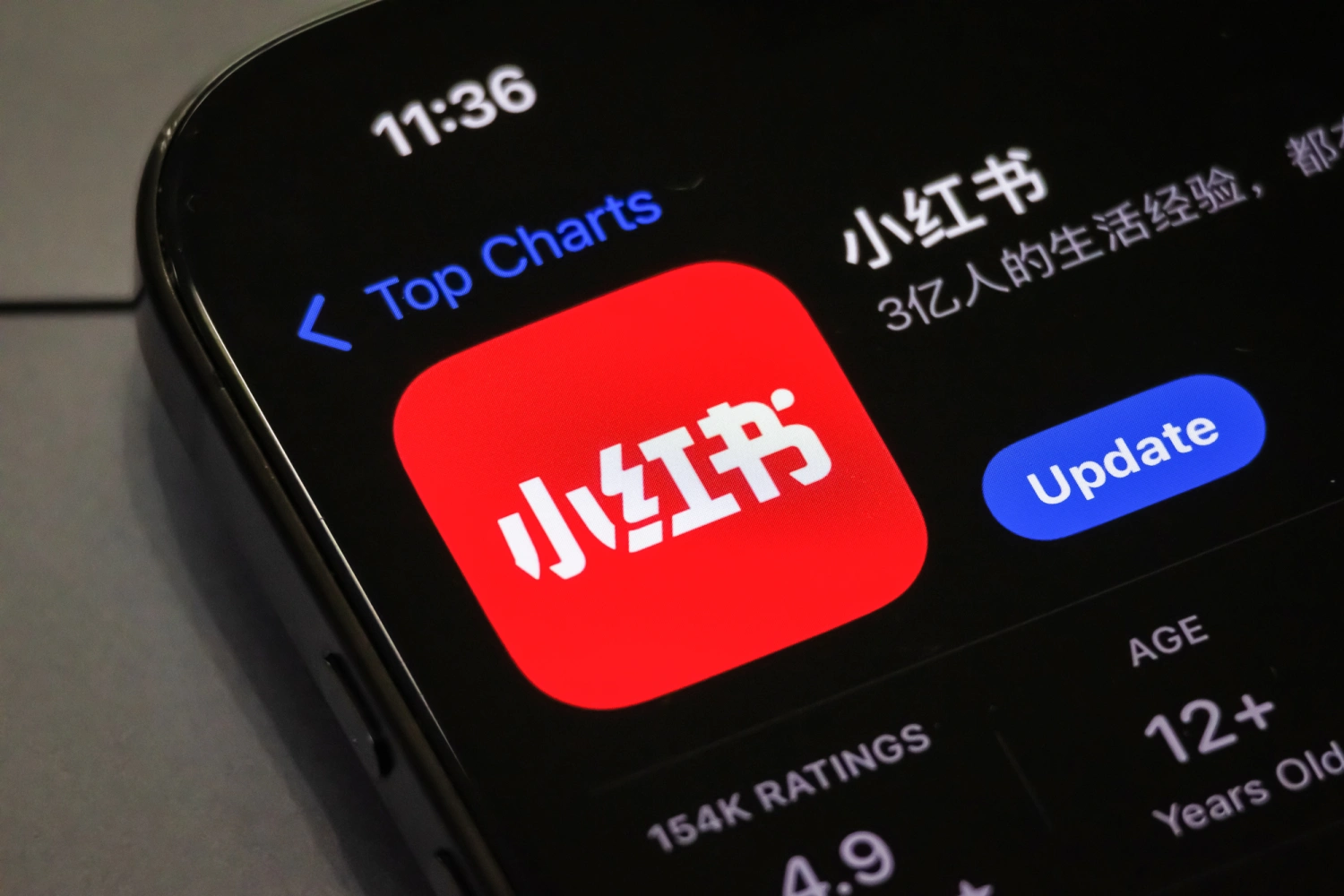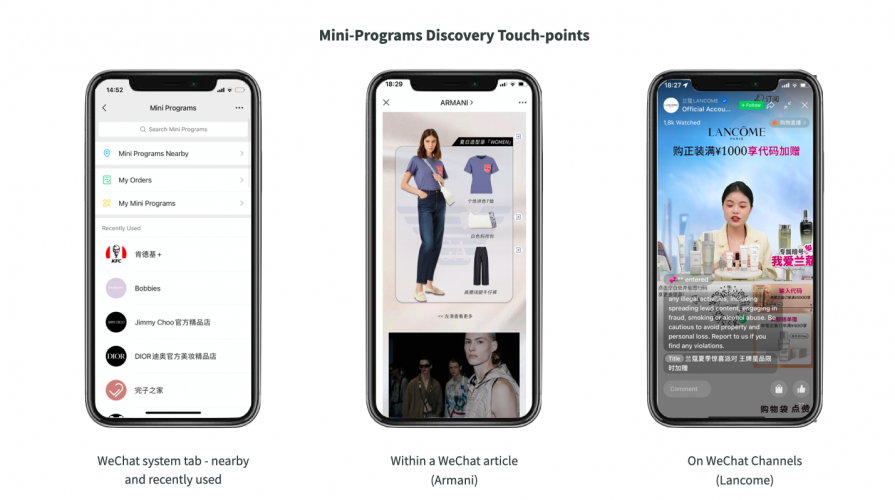China’s short video war heats up as Tencent offers cash to influencers from rivals Douyin and Kuaishou
Tencent’s Weishi, a short video app, is enticing influencers from competing platforms, such as Douyin, TikTok’s Chinese counterpart, by offering cash rewards and other perks. This strategic move aims to capture the attention of viewers in the highly competitive market.
The program primarily targets content creators specializing in movie reviews, healthcare, parenting, and other relevant fields. Additionally, Weishi actively seeks individuals with a relatable and “down-to-earth” lifestyle to participate.
It is important to note that this recruitment initiative aligns with standard industry practices and is not a recent development for Weishi. After witnessing the immense success of ByteDance’s Douyin, which popularized short videos, Tencent revived Weishi in 2018. Subsequently, in 2021, Tencent merged Weishi with its long-form video platform, Tencent Video, creating a unified operation within its platform and content group.
https://www.scmp.com/tech/tech-trends/article/3220197/chinas-short-video-war-heats-tencent-offers-cash-influencers-rivals-douyin-and-kuaishou
Douyin (Chinese TikTok) saw an 80% increase in e-commerce total sales last year
In the year 2022, the total expenditure of consumers on purchases made through the short video platform amounted to RMB 1.41 trillion ($201.4 billion).
Douyin, owned by ByteDance, is actively promoting and encouraging its video viewers to engage in shopping activities through livestreaming and the app’s marketplace channel. This strategic move by the platform aims to diversify its revenue sources and explore new avenues for generating income.
During Douyin’s annual ecosystem conference held in Guangzhou, Wei Wenwen, the president of Douyin’s e-commerce division, unveiled plans to allocate RMB 10 billion to provide support to merchants and facilitate their businesses on the platform.
https://36kr.com/p/2261274230894216
Tencent Games see 25% growth in overseas gaming sector in Q1
In its latest financial report, Tencent, the Chinese tech giant, announced robust growth in gaming revenues during the first quarter. The company’s overseas gaming revenue experienced a significant increase of 25% compared to the previous year, reaching RMB 13.2 billion ($1.88 billion).
Similarly, gaming revenue within the Chinese market witnessed a year-on-year growth of 6%, amounting to RMB 35.1 billion ($5 billion). Tencent’s performance exceeded analysts’ expectations, with the company’s total revenue for the first quarter reaching RMB 150 billion ($21.8 billion), marking an 11% increase compared to the previous year. On a non-IFRS basis, the net profit for the period reached RMB 33.4 billion ($4.9 billion), representing a 27% year-on-year growth.
https://technode.com/2023/05/18/tencent-games-see-25-growth-in-overseas-gaming-sector-in-q1/
More and more brands are using young men as anchors
What is the rationale behind brands using “boys” for live streaming? Will the “boys trend” emerge as a new trend amidst the increasing competition for audience attention and rising solicitation costs?
Utilizing “male appearance level” to tap into organic traffic has become an unspoken consensus among numerous brands. According to data from the Forward-Looking Industry Research Institute in 2021, women constitute 53.8% of Chinese live streaming e-commerce orders, positioning them as the primary consumer group. Platforms like Taobao and Douyin see women accounting for over 60% of users placing orders. Additionally, in terms of age demographics, young and middle-aged individuals form the main consumer base for live streaming e-commerce products. Notably, nearly 30% of viewers belong to the post-1995 and post-2000 generations. Young women exhibit distinct advantages in the realm of live streaming.
Particularly in areas such as beauty products, skincare items, and household goods, women serve as the primary consumer group. Although the correlation between male hosts and products may not be significant, they can pique consumers’ curiosity, foster a sense of participation, and enhance brand attention.
https://mp.weixin.qq.com/s/ytJ005A5HISf9uK-Ka2h-w
62% Of Chinese Luxury Shoppers Are Buying At Home Vs. In European Capitals
Even with the reopening of international borders, Chinese luxury consumers continue to opt for domestic shopping.
In April 2023, 62% of luxury expenditures by Chinese consumers were made within China. As a result, domestic high-end retailers are witnessing robust sales growth.
Chinese consumers have a preference for personalized experiences and interactions with local sales associates. In response to this trend, luxury brands are expanding their presence in China by opening more stores and making global price adjustments.
These brands are also investing in experiential flagship stores and VIP-only boutiques to cater to the expectations of Chinese luxury consumers, who value personalized experiences and seek added value from the brands they choose.
Thus, despite the reopening of international travel, a significant portion of Chinese luxury consumption remains concentrated within China.
https://jingdaily.com/62-chinese-luxury-shoppers-buying-at-home-vs-in-european-capitals/
Strong Domestic Travel Rebound In China Foreshadows Return Of Global Chinese Tourism
There has been a notable increase in the demand for overseas travel and a rise in international spending. However, Chinese consumers are showing less interest in traditionally popular destinations such as Europe compared to pre-pandemic times.
Many Chinese consumers still have concerns regarding deterrents and factors that include the absence of adequate COVID-19 safety measures, strict testing requirements, and barriers related to visa acquisition.
Chinese travelers are now in search of unique and novel experiences and are willing to invest in entertainment, dining, shopping, and distinctive accommodations, including boutique hotels and one-of-a-kind Airbnb homestays.
Specifically, individuals aged between 21 and 45, as well as those with higher incomes, have demonstrated a strong desire to resume overseas travel.
https://jingdaily.com/china-international-outbound-travel-mckinsey/
5 strategies domestic brands use to outshine foreign ones
Chinese domestic brands are capitalizing on their local advantage to challenge the positive reputation enjoyed by foreign brands.
The emergence of the “Guochao” concept highlights consumers’ inclination towards brands that embrace Chinese culture, traditional flavors, scents, and symbols.
To remain competitive in the Chinese market, brands need to prioritize digital transformation, innovation, and establish a strong presence on various social media platforms.
Social media platforms play a pivotal role in brand growth, and features like live commerce contribute significantly to increased sales.
Brands are adopting an omni-channel approach by transforming physical stores into immersive experiences while simultaneously expanding sales through e-commerce channels.
In addition to Key Opinion Leader (KOL) strategies, brands are incorporating Key Opinion Consumers (KOCs) to attract and retain more loyal customers, effectively bridging the gap between brands and their target audience.








